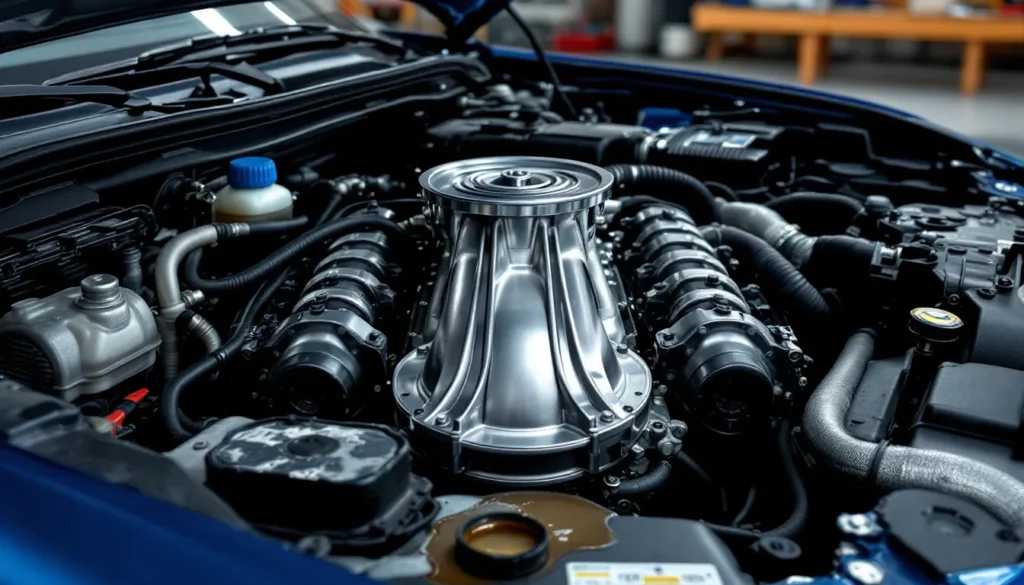Key Takeaways
- Recognize Symptoms: Early signs of a bad water pump include an overheating engine, unusual noises, and low coolant levels, which are crucial to identify for timely repairs.
- Conduct Visual Inspections: Regularly inspect the water pump for coolant leaks, corrosion, and the condition of the drive belt to catch potential issues before they escalate.
- Perform Pressure Testing: Use a pressure tester to check the water pump’s ability to maintain adequate pressure. Fluctuating pressure readings may signify internal problems.
- Understand Causes of Failure: Common causes of water pump failure include wear and tear, as well as contaminated coolant, both of which can be mitigated through proactive vehicle maintenance.
- Implement Preventative Maintenance: Regularly maintain your water pump by checking connections, inspecting coolant quality, and replacing worn parts to ensure optimal performance and longevity.
When your vehicle starts acting up, one of the culprits could be the water pump. This crucial component keeps your engine cool by circulating coolant, and if it fails, you might face serious engine damage. Knowing the signs of a bad water pump can save you time and money while keeping your car running smoothly.
In this guide, you’ll learn how to spot the warning signs that indicate your water pump might be on its last legs. From unusual noises to coolant leaks, recognizing these symptoms early can help you address the issue before it escalates. Stay tuned to ensure your vehicle stays in top shape and avoid the headaches of unexpected repairs.
Signs That Indicate a Bad Water Pump
Recognizing signs of a failing water pump is crucial for maintaining your vehicle’s engine health. Pay attention to the following symptoms.
Overheating Engine
An overheating engine often signals a malfunctioning water pump. When the water pump fails, coolant circulation reduces, causing the engine to heat up. You might notice the temperature gauge rising or steam coming from the engine. If you catch this early, you can avoid significant engine damage.
Unusual Noises
Unusual noises from the engine area can indicate an issue with the water pump. Listen for grinding or whining sounds, which may suggest a worn or broken bearing within the pump. Rattling noises might also arise from loose components. Addressing these sounds promptly can prevent further engine complications.
Low Coolant Levels
Low coolant levels can be a clear sign of a bad water pump. If you frequently need to refill your coolant, check for leaks around the water pump or cooling system. Ensure the hoses and connections are secure and free from damage, as ongoing coolant loss can lead to overheating and engine failure.
Testing Your Water Pump

Testing your water pump ensures it functions effectively and prevents engine damage. Perform visual inspections and pressure tests to identify potential issues.
Visual Inspections
Conduct visual inspections to spot signs of a failing water pump. Look for coolant leaks around the pump area, indicating a worn or damaged seal. Check the pump for corrosion or rust, which can affect its performance. Observe the drive belt for wear; if it’s frayed or loose, replace it to maintain optimal function. Examine the housing for any cracks or damages that may lead to coolant loss.
Pressure Testing
Pressure testing evaluates the water pump’s ability to maintain adequate pressure. Use a pressure tester to confirm the system holds pressure; a drop indicates a leak or faulty pump. Monitor the pressure gauge during the test; if it fluctuates significantly, it suggests internal issues with the pump. Ensure the engine is off and cool before performing the test for safety and accuracy.
Causes of Water Pump Failure
Understanding the causes of water pump failure helps you take proactive measures in vehicle maintenance. Several factors can contribute to a malfunctioning water pump.
Wear and Tear
Wear and tear often lead to water pump failure. Continuous operation causes parts like bearings and seals to degrade over time. If you notice unusual noises or leaks, it’s essential to investigate further. Inspect for signs of wear on the drive belt and other components. Replacing worn parts promptly prevents further damage to the water pump and other cooling system parts.
Contaminated Coolant
Contaminated coolant can significantly impact the water pump’s effectiveness. Debris and particles in the coolant may cause corrosion and wear on the pump’s internal components. Always ensure coolant is clean and changed regularly according to manufacturer recommendations. If you observe sludge or discoloration, flush the cooling system to eliminate contaminants and maintain proper function.
Preventative Measures for Water Pump Longevity
Implementing preventative measures ensures optimal performance and longevity of your water pump. Regular maintenance and coolant quality checks play crucial roles in preventing pump failure.
Regular Maintenance
Perform regular maintenance on your water pump for enhanced longevity. Inspect the drive belt for signs of wear and replace it if necessary. Tighten all connections to prevent coolant leaks. Schedule periodic visual inspections for corrosion or damage. Replacing worn-out parts promptly can avert major issues. Consistently check for unusual noises during operation, as they may indicate impending problems.
Coolant Quality Checks
Maintain coolant quality to protect your water pump. Regularly inspect coolant levels and look for signs of contamination, such as sludge or discoloration. Replace coolant according to your vehicle manufacturer’s guidelines, typically every 30,000 to 50,000 miles, to prevent buildup. If you notice any debris in the coolant, flush the cooling system to maintain efficiency. Proper coolant pH levels contribute significantly to preventing corrosion and ensuring effective heat transfer, thus extending water pump life.
Conclusion
Recognizing the signs of a bad water pump is crucial for maintaining your vehicle’s health. By staying alert to symptoms like unusual noises and coolant leaks you can prevent serious engine damage. Regular inspections and maintenance will help you catch issues early and keep your water pump functioning effectively.
Don’t overlook the importance of coolant quality and regular changes. Keeping your cooling system clean and well-maintained ensures optimal performance and longevity. By following these guidelines you can safeguard your engine and enjoy a smoother driving experience. Take action now to keep your vehicle in top shape.

Hi, I’m Md Rofiqul, a gardening enthusiast who loves spending time in the garden and backyard. I enjoy caring for plants, growing flowers and vegetables, and creating a green space that feels peaceful and refreshing. Gardening is more than just a hobby, it’s a passion that connects me to nature and brings joy to my daily life. Living with plants inspires me to embrace simplicity, patience, and sustainability while making every day more colorful and rewarding.
